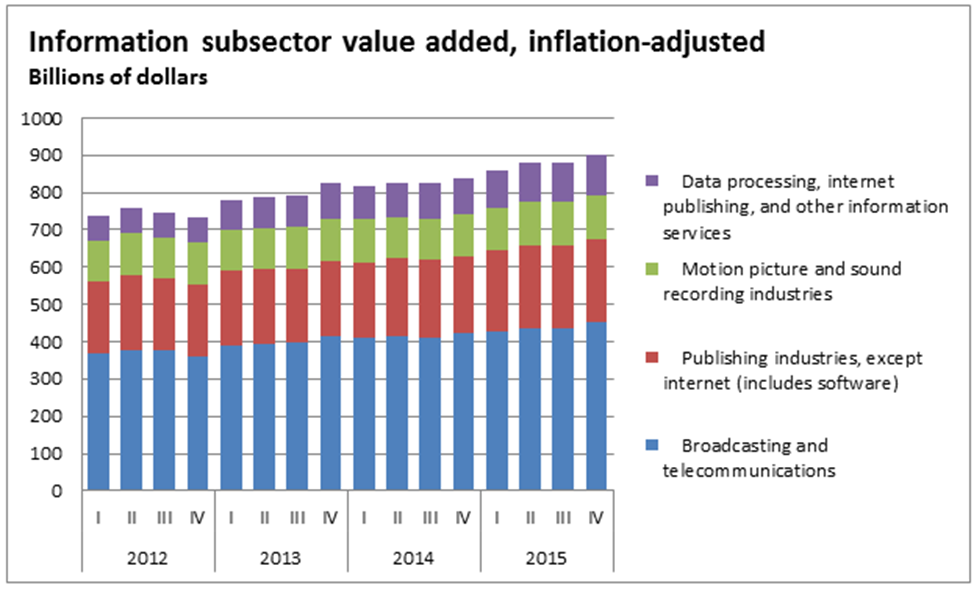The Information industry, more than just about any other industry, illustrates just how much the U.S. economy has changed over time. Not all that long ago, in previously used industry classification systems, the information sector didn’t have its own category. Many of its activities fell under other industries such as manufacturing, communications, and business services, but weren’t always separately identified.
Developments in information technology led to the birth of entirely new industries and remade other industries, so around the turn of the 21st century many statistical agencies transitioned to using the North American Industry Classification System, or NAICS, which devotes an entire sector to the information industry.
The industry now contributes close to $900 billion in value added to the U.S. economy. The information industry’s significance has grown so much that BEA now publishes a separate line for information-communications-technology-producing industries, or ICT industries, in its annual GDP-by-industry statistics.

In the fourth quarter of 2015, the information industry was the largest contributor to the U.S. economy’s 1.4 percent growth. The industry contributed 0.49 percentage point to U.S. GDP.
Now let’s drill down and look at the industry’s subsectors. A quick glance at our underlying detail tables shows that all four subsectors grew in the fourth quarter, but at different rates.
Of the subsectors, broadcasting and telecommunications was the biggest driver to the overall economy’s growth in the fourth quarter, contributing 0.33 percentage point , the most since the fourth quarter of 2013.
Information and data processing was the second-largest contributor to U.S. GDP growth among information industries, contributing 0.09 percentage point.
Now let’s look at how the information industry did for all of 2015. With the publication of fourth-quarter data, BEA also released a sneak peek into industry data for last year, a product we call the “advance annual” release. That’s a prelude to a larger set of 2015 data that will come out in the fall of this year, providing additional tables like the input-output tables, which show the goods and services that industries need to produce their products and details on how those products are used throughout the economy.
The information industry was the second-largest contributor to the U.S. economy’s growth last year. It contributed 0.30 percentage point to the U.S. economy’s 2.4 percent increase in GDP in 2015. All four information subsectors also grew.
Looking at quarterly GDP-by-industry data in conjunction with annual data provides deeper insight into what makes the economy tick. The ability to see that broadcasting and telecommunications had a strong year is helpful, but the ability to observe how much the fourth quarter in particular drove that performance allows for much stronger analysis of the events one reads about in the news. Quarterly GDP-by-industry data is just one of the many ways in which BEA strives to improve the accuracy, relevance, and timeliness of our statistics.